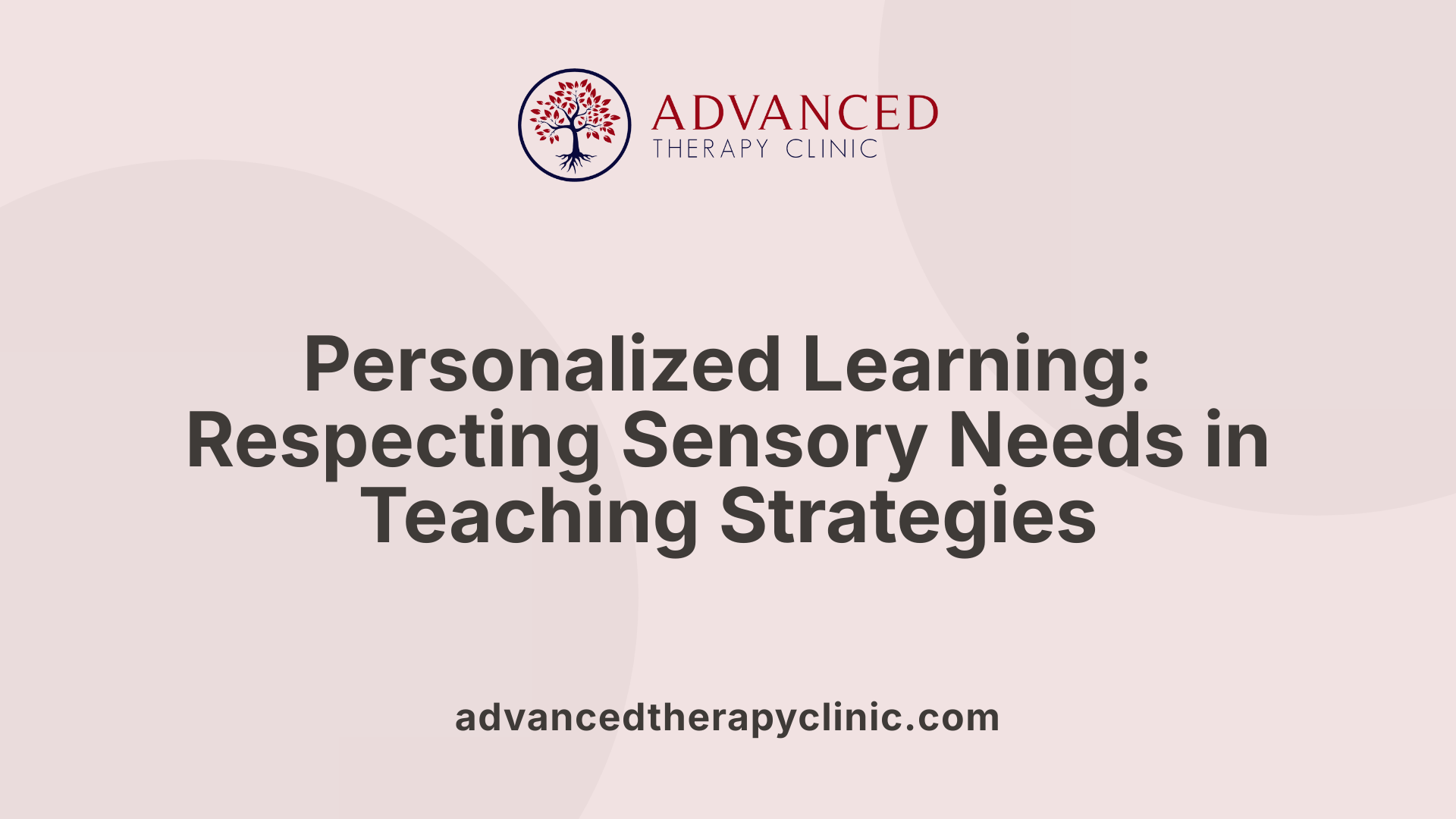Is Your Autistic Adult Child Ready To Move Out?


Understanding the Journey Towards Independence
Transitioning to independent living is a significant milestone for any young adult, and it presents unique considerations for autistic individuals and their families. With growing evidence supporting holistic, strength-based, and neurodiversity-affirming approaches, preparing your autistic adult child to move out involves more than just practical skills—it encompasses personalized support, therapeutic interventions, and respect for autonomy and identity. This article explores key factors, therapeutic strategies, and the role of community resources in fostering successful independent living for autistic adults.
The Importance of Supporting Autistic Adults Through Occupational Therapy
What is the Role of Occupational Therapy (OT) in Autism?
Occupational therapy plays a crucial role in supporting autistic adults. It focuses on improving their ability to engage in meaningful daily activities, promoting independence and enhancing quality of life. OT practitioners assess each individual's unique needs, sensory sensitivities, and social challenges to tailor interventions that support participation in self-care, home management, social skills, and mental health management.
How Can Occupational Therapy Assist Autistic Adults in Gaining Independence?
OT helps autistic adults overcome challenges related to sensory processing, social interaction, and executive functioning. Therapists provide practical strategies and tools that enable individuals to manage daily tasks independently. This includes skills such as personal hygiene, cooking, household management, and social engagement. The process involves breaking down complex tasks into manageable steps, using visual supports, and incorporating routines that suit sensory preferences.
What Strategies Does OT Use to Promote Independence?
Occupational therapy employs evidence-based practices like personalized planning, role-playing, social stories, and coaching. Therapists also adapt environments to reduce sensory overload and support comfort. Education and involvement of care partners further enhance intervention success. These strategies are continuously evaluated and adjusted to meet evolving individual needs, fostering autonomy and confidence.
How Does OT Address Sensory, Social, and Executive Functioning Challenges?
Many autistic adults experience difficulties with sensory sensitivities, social communication, and organizing daily activities. OT interventions help regulate sensory input and develop social skills without forcing conformity to neurotypical norms. By acknowledging neurodiversity and using a strengths-based approach, therapists empower clients to navigate social situations authentically while managing executive tasks like planning and time management.
How Does Assessment and Personalized Planning Support OT Effectiveness?
Effective OT begins with comprehensive assessment to understand each person's challenges and strengths. This informs a personalized plan that integrates client preferences, goals, and evidence-based techniques. Ongoing evaluation ensures that interventions remain relevant and effective. This person-centered approach respects autonomy and promotes genuine engagement in therapy.
| Aspect | Description | Benefits |
|---|---|---|
| Sensory Regulation | Tailored strategies to manage sensory sensitivities | Reduces overwhelm and supports comfort in daily environments |
| Social Skills | Role-playing, social stories, and coaching | Enhances authentic communication and reduces stress |
| Executive Functioning | Task breakdown, routines, and visual supports | Improves organization, planning, and task completion |
| Environment Adaptation | Modifying surroundings to reduce barriers | Facilitates participation and independence |
| Personalized Planning | Individualized goals and strategies | Aligns therapy with personal strengths and aspirations |
Multidisciplinary and Goal-Oriented Interventions: A Proven Approach
What evidence supports the use of multidisciplinary, goal-oriented interventions for autistic adults?
Strong to moderate evidence highlights the effectiveness of using multidisciplinary, goal-oriented interventions for autistic individuals. These approaches involve collaboration among occupational therapists, speech therapists, caregivers, and community supports working together to meet the unique needs of autistic adults. Such teamwork allows for comprehensive care that addresses diverse challenges ranging from sensory sensitivities to executive functioning.
Goal-setting tailored to individual strengths and interests
Emerging research emphasizes incorporating autistic people's strengths, interests, and perspectives in shaping therapy goals. Tailored interventions that reflect the individual's unique abilities not only foster engagement but also promote self-determination, supporting positive mental health and participation in daily occupations such as sleep, health management, and social activities.
Inclusion of autistic perspectives in therapies
Respecting and including autistic voices ensures that therapies remain client-centered and neurodiversity-affirming. This approach rejects normalization or coercive techniques and instead encourages interventions grounded in autonomy, consent, and authentic communication.
Environmental adaptations, care partner education, coaching
Effective occupational therapy practices also focus on modifying environmental factors to better support participation and independence. Educating care partners and providing coaching empower those involved in daily support, further enhancing therapy outcomes and generalization of skills into real-world settings. These combined strategies contribute to meaningful improvements in quality of life and functional independence for autistic adults.
Independent Living Skills: Building Foundations for Autonomy
What are the essential independent living skills autistic adults need to develop?
Essential independent living skills for autistic adults encompass managing various daily activities that promote autonomy and confidence. These include personal hygiene, cooking, household maintenance, managing finances, and social skills. Mastery of these skills significantly enhances independence and quality of life by enabling individuals to navigate everyday responsibilities independently.
Daily Living Activities (ADLs) and Their Importance
Participation in activities of daily living (ADLs) such as grooming, meal preparation, and cleaning forms the backbone of independent living. However, research points to a noticeable gap in the literature regarding autistic youths’ participation in ADLs, underlining the need for focused interventions and further study to support this area.
Teaching Strategies for Skill Acquisition
Effective teaching strategies break down complex tasks into small, manageable steps. This granular approach helps reduce overwhelm and fosters gradual skill-building. Visual supports serve as helpful cues and reminders that strengthen memory and comprehension.
Establishing consistent routines provides structure and predictability, which can reduce anxiety and increase participation. Social stories and role-playing are valuable methods to teach social skills and real-life scenarios, enabling practice in a safe space.
Tailored teaching methods address sensory sensitivities and individual preferences, ensuring that strategies meet the unique needs of each person. This personalization enhances engagement and learning success.
Role of Visual Supports, Routines, Social Stories, and Tailored Methods
Visual supports act as concrete guides that clarify task sequences or social expectations. Routines anchor daily life, reducing uncertainty. Social stories narrate experiences and social cues in an understandable format, promoting better comprehension.
Tailored approaches that respect sensory processing differences and individual communication styles foster a neurodiversity-affirming environment. This encourages participation without pressure to conform to neurotypical norms, supporting authentic growth and self-determination.
By integrating these strategies into occupational therapy and daily practice, autistic adults can build foundational skills that empower them toward greater independence and enriched quality of life.
Employment Support: Fostering Financial Independence and Fulfillment
How can employment support benefit autistic adults preparing to live independently?
Employment support plays a crucial role in helping autistic adults prepare for independent living by promoting financial independence and personal fulfillment. Key components of this support include job skills training, vocational counseling, workplace adjustments, and individualized career guidance—each tailored to meet unique strengths and challenges.
Job skills training focuses on practical preparation, breaking down workplace tasks into manageable steps and using strategies like visual supports and routines. This hands-on approach builds confidence and competence in job-related activities.
Vocational counseling offers personalized career exploration and planning, helping individuals identify interests, strengths, and suitable career paths. Counselors provide guidance on resume building, interview skills, and job search strategies.
Workplace adjustments are essential for creating supportive environments. These may involve sensory accommodations, flexible scheduling, or clear communication methods that consider autistic individuals' preferences and needs.
Individualized career guidance ensures ongoing mentorship and support tailored to each person’s goals and progress, bridging the gap between training and sustained employment.
Together, these elements help autistic adults engage meaningfully in the workforce, fostering autonomy, improving quality of life, and enabling active participation in their communities.
Community Involvement and Technology as Tools for Independence

In what ways do community involvement and technology support independence for autistic adults?
Community involvement plays a crucial role in fostering independence among autistic adults by offering valuable opportunities for social interaction and real-world practice. Participating in community activities allows individuals to develop and apply social skills in natural settings, building confidence and a sense of belonging. It also helps in enhancing daily living skills through engagement in meaningful occupations alongside others.
Technology complements these efforts by providing accessible tools that support communication, organization, and learning. Digital platforms and applications can facilitate social connections, help structure routines, and offer tailored educational resources that cater to individual needs and sensory preferences. These tools empower autistic adults to manage daily tasks more independently and engage actively with their communities.
Together, community participation and technology form a supportive framework that promotes autonomy and skill development. By integrating person-centered approaches with community resources and technological aids, occupational therapy practitioners can help autistic adults achieve greater independence and improved quality of life.
The Role of ABA and Other Therapy Services in Supporting Adult Independence

What therapy services are available to support autistic adults in gaining independence?
Applied Behavior Analysis (ABA) therapy is a cornerstone intervention available to autistic adults, offered by organizations such as ABA Midwest Education, ABC Pathways, and Ability Behavior Services. These providers offer both in-home and center-based ABA therapy, increasing accessibility for individuals across different circumstances. Notably, several accept Medicaid plans, broadening opportunities for those from various socioeconomic backgrounds to access this service.
Beyond ABA, many providers deliver a comprehensive suite of integrated therapy services. These include speech therapy to enhance communication, occupational therapy (OT) for daily living and sensory challenges, physical therapy for motor skills, counseling to support mental health, and nutrition therapy addressing dietary needs. This multimodal approach ensures a holistic support system targeting diverse aspects of adult autistic individuals' lives.
Specific programs within these organizations focus on fostering independent living skills, vital for enhancing quality of life. They cover practical domains such as personal care, cooking, household management, financial literacy, and social skills. Programs are tailored according to the age and unique needs of each participant, following evidence-based practices and ensuring therapists hold proper credentials like the Board Certified Behavior Analyst (BCBA) qualification.
Such integrated services are designed not only to build functional skills but also to support autonomy and personal fulfillment. Emphasizing goal-oriented, person-centered interventions, these programs bridge the gap between therapy and real-world application, enabling autistic adults to confidently navigate life transitions and achieve greater independence.
Choosing the Right Occupational Therapist for Your Autistic Adult Child

Qualifications and expertise in ASD
When selecting an occupational therapist (OT) for an autistic adult child, it's important to ensure the therapist has specific expertise in Autism Spectrum Disorder (ASD). Therapists with credentials such as Board Certified Behavior Analysts (BCBAs) or certification in autism-specific interventions demonstrate their commitment to evidence-based, specialized care.
Experience working with adults
Because autism manifests differently across the lifespan, therapists experienced with adults can better understand the unique challenges faced during life transitions and independence building. Adult-focused practitioners are familiar with supporting skills like independent living, sensory regulation, and managing co-occurring mental health issues.
Person-centered, neurodiversity-affirming approach
A therapist who practices neurodiversity-affirming care respects autistic social communication differences without attempting to normalize behaviors. This approach is trauma-informed, non-coercive, and prioritizes autonomy and consent. Such therapists emphasize authentic communication and support participation in meaningful occupations with attention to strengths and preferences.
Resources for finding therapists
Families can locate qualified occupational therapists through multiple channels including professional directories and referrals from healthcare providers. Researching therapists who emphasize holistic, tailored services and offer virtual or in-home sessions can improve access. Consultation meetings are valuable to assess fit and approach.
How can families find qualified occupational therapists for autistic adults?
Finding an occupational therapist with expertise in ASD, experience working with adults, and a person-centered approach is crucial. Resources include professional directories, referrals from healthcare providers, research, and consultations. Neurodiversity-affirming therapists emphasize respect for autistic communication and autonomy, focusing on holistic and tailored support.
Neurodiversity-Affirming Therapy: Respecting Autistic Identity and Communication
What defines neurodiversity-affirming therapy for autistic adults?
Neurodiversity-affirming therapy embraces and respects the natural diversity in autistic social communication and behavior. Unlike traditional approaches that seek to normalize or eliminate autistic traits, this therapy honors the authentic autistic identity and promotes acceptance rather than conformity.
Neurodiversity-affirming practices
These practices focus on client-centered care that recognizes and values autistic individuals’ unique perspectives and strengths. They reject the idea that autistic behaviors are deficiencies to be corrected. Instead, they prioritize interventions that enhance well-being, autonomy, and meaningful participation without forcing change to fit neurotypical norms.
Avoiding normalization of autistic traits
Efforts to train autistic adults to adopt neurotypical social behaviors—commonly known as masking or camouflaging—are discouraged because they often lead to mental health challenges, including anxiety, depression, and burnout. Neurodiversity-affirming therapy explicitly avoids promoting such normalization or compliance, as these approaches can be disempowering and harmful.
Client-centered, trauma-informed care
The approach is trauma-informed, ensuring that therapy does not trigger past harms and respects the individual's consent and communication style. It affirms autistic adults’ autonomy by providing a safe, supportive environment where genuine communication is encouraged, and sensory or social preferences are honored.
Rejection of coercive approaches
Coercive or compliance-based therapies, including some traditional applications of ABA, are widely rejected within neurodiversity-affirming frameworks due to their documented harmful effects. Instead, therapy focuses on modifying environments and social expectations to support autistic adults’ comfort and success without demanding suppression of their traits.
This respectful, strength-based framework is supported by research highlighting the importance of embracing autistic social styles and understanding the Double Empathy Problem, which calls for mutual acceptance rather than one-sided adaptation. By centering autonomy, consent, and authentic interaction, neurodiversity-affirming therapy empowers autistic adults to thrive on their own terms.
Understanding the Harm of Masking and the Importance of Authenticity
What is Masking and Why is it Risky?
Masking, or camouflaging, refers to autistic individuals hiding or suppressing their natural behaviors and traits to fit in with neurotypical social expectations. This often means changing how they communicate, behave, or express themselves to avoid standing out.
How Does Masking Impact Mental Health?
Research consistently links masking to severe mental health challenges, including anxiety, depression, and increased suicidal thoughts. Because masking is exhausting and requires constant vigilance, it can lead to burnout and emotional distress.
Why is Authentic Self-Expression Important?
Fostering authentic self-expression allows autistic adults to engage with others without hiding their identity. Therapy that respects and celebrates autistic communication styles reduces the pressure to mask and promotes psychological well-being.
Why is Masking Harmful for Autistic Adults, and How Should Therapy Address It?
Masking forces autistic individuals to conform to neurotypical norms, often causing internal conflict and emotional harm. Effective therapy prioritizes acceptance, supports autistic traits, and avoids coercion. By encouraging authentic expression, therapeutic approaches help lower the risk of mental health problems linked to camouflaging.
This neurodiversity-affirming approach promotes autonomy, consent, and genuine communication, moving away from harmful normalization practices. It helps build safer and more supportive environments where autistic individuals can thrive without compromising their identity.
The Double Empathy Problem: Rethinking Social Skills and Inclusion
What is the Double Empathy Problem and Its Significance in Autistic Adult Independence?
The Double Empathy Problem highlights that communication difficulties between autistic and neurotypical individuals arise from a two-way mismatch in social understanding, rather than a deficit solely on the autistic side. This concept shifts the perspective from trying to 'fix' autistic social behaviors to appreciating diverse social intelligences. Recognizing this fosters genuine acceptance and strengthens autistic adults' independence by validating their preferred ways of interaction.
Diversity in Social Intelligence
Social intelligence is not a single, uniform skill but varies widely between individuals, including autistic people. Embracing this diversity acknowledges that different social communication styles are natural variations rather than impairments. Attempts to train autistic individuals exclusively in neurotypical social norms often cause harm, including emotional burnout and mental health challenges. Acknowledging multiple intelligences supports respectful and affirming communication methods.
Advocacy for Autistic-Led Socialization
Supporting autistic adults means promoting social interactions led or chosen by autistic individuals themselves. This autonomy in social decision-making respects personal preferences and reduces the pressures to mask or camouflage natural traits, which have been linked to anxiety and depression. Autistic-led socialization empowers individuals to connect in ways that are authentic and fulfilling, fostering better mental health and community inclusion.
Environmental Accommodations Over Behavior Compliance
Instead of focusing on changing autistic behaviors to fit neurotypical standards, the emphasis is on adapting environments to meet autistic needs. Modifications might include sensory-friendly spaces or communication supports that honor sensory processing differences and preferred interaction styles. This approach mitigates the stress caused by forcing conformity, promoting wellbeing and sustainable participation in daily life.
This evolving understanding encourages trauma-informed, consent-driven, and non-coercive therapeutic practices. It aligns with neurodiversity-affirming principles and seeks to dismantle harmful compliance-based models, replacing them with respectful, inclusive strategies that support true independence for autistic adults.
Evidence Gaps: Participation in Activities of Daily Living for Autistic Youth and Adults
What are the current research gaps in participation in activities of daily living for autistic individuals?
Despite growing attention on autism support, there remains limited research on how autistic youths and adults participate in activities of daily living (ADLs). ADLs include crucial daily tasks such as personal hygiene, cooking, household maintenance, and financial management — all essential skills for independent living and quality of life.
This research gap highlights the difficulty in fully understanding the challenges and strengths autistic individuals bring to these everyday activities. Without a robust evidence base, interventions may not be well-tailored to their real-world needs, and service development can lag behind clinical demand.
Research limitations on ADL participation
The current literature is insufficient in exploring factors that influence ADL participation, including sensory sensitivities, executive functioning, and social interaction nuances specific to autism. Moreover, the few available studies tend to focus more on children or specific therapeutic approaches, leaving adult populations particularly underrepresented.
Need for further study to inform interventions
Expanding research in this area is critical. Systematic studies can guide occupational therapy and other supportive practices by identifying effective strategies for teaching and supporting ADLs. This would help practitioners design strength-based, person-centered, and neurodiversity-affirming interventions that promote autonomy and well-being.
Potential impact on service development
Filling these evidence gaps will enhance interdisciplinary and tailored service offerings. Comprehensive understanding of ADL participation can inform environmental adaptations, caregiver coaching, and community integration strategies. Ultimately, this knowledge supports autistic individuals' ability to lead fulfilling, independent lives across all stages.
| Topic | Current Status | Impact of Addressing Gap |
|---|---|---|
| ADL Participation Research | Limited and fragmented | Improved, evidence-based intervention design |
| Understanding Adult Autism in ADLs | Understudied | Better tailored adult support services |
| Intervention Development | Guided by emerging but incomplete evidence | Enhanced holistic and strength-based care |
The Significance of Positive Mental Health and Self-Determination in Transitioning
Why are positive mental health and self-determination important when autistic adults move out?
Positive mental health and self-determination are fundamental pillars in the transition to independent living for autistic adults. Occupational therapy guidelines emphasize these aspects as crucial for fostering autonomy, resilience, and overall well-being. By supporting positive mental health, therapists help individuals maintain emotional balance and reduce risks associated with anxiety, depression, and stress, which are commonly heightened during life transitions.
Promoting self-determination empowers autistic adults to make informed decisions, set personal goals, and advocate for their needs. This strengthens their confidence and motivation to engage in daily occupations critical for independent living, such as managing sleep routines, health care, and social participation.
The integration of these focuses within occupational therapy is grounded in systematic reviews highlighting multidisciplinary, goal-oriented interventions. The approach prioritizes personalized strategies that include environmental adaptations and care partner coaching, further supporting mental well-being and autonomy.
Ultimately, emphasizing positive mental health and self-determination enables successful adaptation to new roles and environments. It enhances quality of life by encouraging active participation in meaningful activities and fostering a sense of control over one’s life trajectory.
Tailored Teaching Strategies Respecting Sensory Sensitivities

How do teaching strategies account for sensory sensitivities in autistic adults learning independent living skills?
Teaching strategies for autistic adults focus on breaking down complex tasks into smaller, manageable steps to ease learning and improve retention. Visual supports, like checklists or picture cues, help clarify each step while routines provide a predictable framework that fosters comfort and consistency.
Social stories are used to explain situations and expectations in a clear, relatable way, reducing anxiety and enhancing understanding. Role-playing offers a safe space to practice skills and behaviors, allowing learners to build confidence through repetition and feedback.
A crucial aspect of these strategies is respecting sensory sensitivities by tailoring approaches to each individual's unique sensory profile. For example, adjustments might be made to minimize overwhelming stimuli during sessions, such as reducing noise, bright lights, or tactile distractions.
This customization not only helps in reducing sensory overload but also supports smoother engagement and skill acquisition in crucial areas like personal hygiene, cooking, and managing finances. Such individualized methods encourage autonomy, making it easier for autistic adults to master independent living skills while feeling supported and understood.
Holistic, Accessible Therapy Services: Embracing Virtual and Community-Based Options
How do contemporary therapy services support autistic adults holistically and accessibly?
Modern therapy services for autistic adults are designed to be both holistic and accessible, addressing a broad spectrum of needs. Providers like NHWS emphasize tailored programs that integrate functional skill development—such as independent living, sensory regulation, and social participation—with mental health support. This ensures clients receive comprehensive care that honors their individuality and promotes overall well-being.
Virtual therapy sessions play a crucial role in accessibility, breaking down geographic, physical, and social barriers that might prevent individuals from receiving consistent care. Telehealth platforms provide flexible scheduling, comfort, and privacy, allowing autistic adults who might struggle with in-person appointments to engage more fully.
Moreover, these therapy programs often incorporate community resources and technology, fostering real-world practice and social interaction outside the clinical environment. This community-based approach enhances independence and supports lifelong learning.
Using a person-centered approach combined with neurodiversity-affirming frameworks, therapy services respect autistic communication styles and sensory needs. Prioritizing client consent and autonomy, these services avoid coercive methods, creating supportive spaces that encourage authentic self-expression.
Overall, combining functional skill-building, mental health care, flexible virtual options, and community integration creates an inclusive, effective support system that empowers autistic adults to thrive in their everyday lives.
The Controversy Around Traditional ABA and The Call for Change

What are the concerns surrounding traditional ABA therapy for autistic adults?
Applied Behavior Analysis (ABA) therapy, especially when it involves aversive and compliance-based methods, has faced significant criticism within the autistic community and among professionals. These traditional ABA approaches often focus on normalizing autistic behaviors through strict behavioral modification, which can cause harm rather than benefit.
Critics argue that such normalization attempts force autistic individuals to mask their natural traits, leading to emotional exhaustion, increased anxiety, depression, and even suicidal ideation. This masking—sometimes called camouflaging—can deeply affect mental health and overall well-being.
Many autistic advocates and informed professionals are calling for the abolition of these harmful practices. They highlight that forcing conformity to neurotypical social norms violates human rights and disregards the validity of diverse communication and social interaction styles.
The neurodiversity movement champions a shift towards affirming autistic traits rather than trying to erase them. It stresses trauma-informed, client-centered care that respects autonomy and authentic communication. Interventions should focus on modifying environments to support autistic individuals instead of demanding compliance or behavior change.
This perspective fosters genuine inclusion and acceptance by recognizing autistic social behaviors as part of natural human diversity. It encourages autistic-led socialization and the honoring of sensory and communication preferences, thereby promoting true mental health and well-being.
In summary, the controversy around traditional ABA centers on its harmful normalization efforts, with growing calls for change towards respectful, neurodiversity-affirming practices that uphold the dignity and individuality of autistic people.
Supporting Successful Transitions to Independent Living
Preparing your autistic adult child to move out is a comprehensive process that intertwines practical skills development, therapeutic support, respect for neurodiversity, and community engagement. Embracing strength-based, inclusive, and person-centered approaches ensures that independence is achieved with dignity, authenticity, and well-being. Families can foster this growth by connecting with knowledgeable therapists, utilizing multidisciplinary services, advocating for neurodiversity-affirming care, and leveraging relevant technologies and community resources. While each journey is unique, the evolving landscape of evidence-based practices promises more supportive and empowering pathways toward adult independence for autistic individuals.
References
Recent articles

Managing Anxiety in Autism
Understanding and Addressing Anxiety in Autism Spectrum Disorders

Autism Home Care Services
Navigating the World of Autism Home Care

Can Level 3 Autism Be Cured
Navigating the Landscape of Level 3 Autism: Understanding, Managing, and Acceptance

Aba Therapy for Adhd
Exploring the Impact of ABA Therapy on ADHD

What Is Expressive Language Disorder
Understanding the Nuances of Expressive Language Disorder

Diy Sensory Table for Autism
Crafting a Sensory Oasis for Children with Autism


